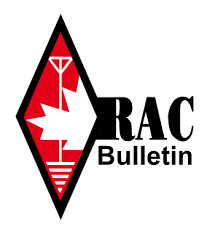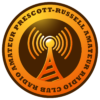RAC Ontario Sections Bulletin for November 26, 2022
Bulletin Station for Radio Amateurs of Canada with this week’s bulletin.
NATIONAL/INTERNATIONAL NEWS
1. Bryan Rawlings, VE3QN, appointed to Canadian Amateur Radio Hall of Fame (CARHOF)
The Board of Trustees of the Canadian Amateur Radio Hall of Fame is pleased to announce that
Bryan Rawlings, VE3QN, has been named to the Hall of Fame.
The Constitution for the Hall specifies that the appointment as Member of the Hall is made for
“outstanding achievement and excellence of the highest degree, for serious and sustained service
to Amateur Radio in Canada, or to Amateur Radio at large”.
A detailed account of his achievements will be presented in an upcoming edition of The Canadian
Amateur magazine.
For more info on the Canadian Amateur Radio Hall of Fame please visit: https://wp.rac.ca/carhof/
— Frank Davis, VO1HP, Chair, Board of Trustees, Canadian Amateur Radio Hall of Fame
ONTARIO SECTION NEWS
ITEMS OF INTEREST
2. Dayton Hamvention Announces Theme for 2023
Dayton Hamvention® 2023 is just over 6 months away, and next year’s Hamvention team has
selected ” Innovation! ” as the event theme.
The team reports that, in just one word, the theme encompasses the world of amateur radio today.
“There are so many exciting ‘Innovations!’ worldwide in amateur radio. We want to capture the spirit,
and we expect to see many of these throughout the coming year and presented at Hamvention 2023.
Hamvention 2023 runs from May 19 – 21 at the Greene County Fairgrounds in Xenia, Ohio.
Tickets are on sale now, and can be purchased at https://hamvention.org/purchase-tickets.
Hamvention’s website is at https:/hamvention.org
3. BIG PROMISE FROM ULTRA-TINY BATTERY
A company in France believes it has come up with the latest solution to provide battery power for
micro-power devices. The company, ITEN, has developed an ultra-small rechargeable lithium battery.
At first glance, the surface-mount solid-state battery might easily be mistaken for an SMD chip as its
housing is only slightly larger than the battery’s own dimensions of 3.2 by 2.5 mm. They are, of course,
not chips: These batteries have a capacity of between 0.1 mAh and 0.5 mAh. They were found capable
of tolerating temperatures between minus 40 degrees Celsius, all the way to 85 degrees Celsius.
Their ability to deliver peak currents make them especially useful for powering RF transmissions such as
Bluetooth, Sigfox and LTE, to deliver packets of data via sensors. The website, CNX software, also sees
the batteries as being useful for sensor data loggers, beacons and backup power supplies for microcontrollers.
The solid-state technology is considered another plus contributing toward a usable lifespan of between
10 and 20 years. The company has said the batteries are also fast-charging.
Hackaday, notes that there are some evaluation kits available directly from the company in France.
— Amateur Radio Newsline/ Hackaday.
4 Wildfire-monitoring satellite built by U of A students to be launched into space
The satellite, dubbed Ex-Alta 2, was created through the efforts of hundreds of students in the AlbertaSat
club and will be making its way to the Canadian Space Agency this week, before being shipped to NASA
for launch in February.
Ex-Alta 2 is a “CubeSat” (about the size of a loaf of bread) and its mission is a wildfire imaging satellite,
it has a custom camera onboard, student-built, student-designed and tested and it will be taking images
of active wildfires, postburn effects and vegetation analysis.
The inspiration for the project was the 2016 Fort McMurray wildfire and students have been working on the
satellite over the last five years. Its estimated operational life is one year after deployment.
While the focus will be on wildfires in Canada, the satellite will be able to take images worldwide. Due to its
orbit, students will only be able to communicate with the satellite, send it commands, and download images
for about 10 to 15 minutes and only about three times a day.
The satellite is part of the Canadian CubeSat project run by the Canadian Space Agency, where university students comprised of 15 teams in all provinces across the country were given the opportunity to build a CubeSat.
— Postmedia.com Author: Anna Junker [email protected]
This concludes this week’s bulletin.
Bulletin sent from Official Bulletin Manager VA3PC
RAC Ontario Sections Bulletin for November 26, 2022

